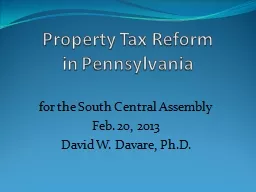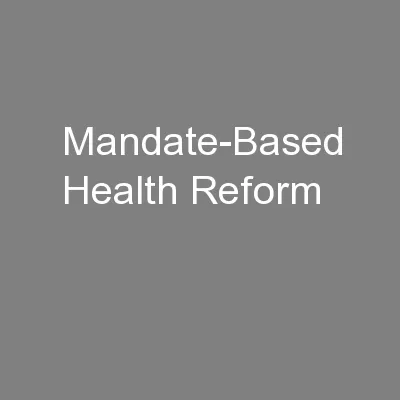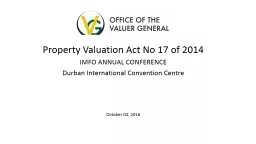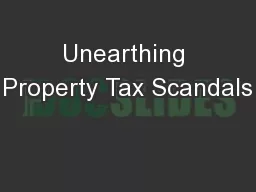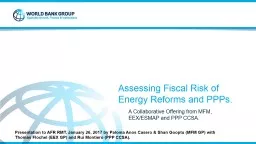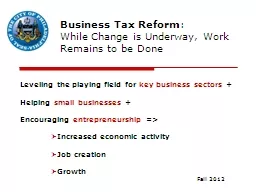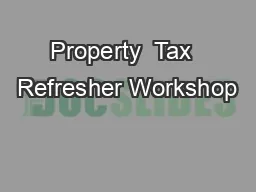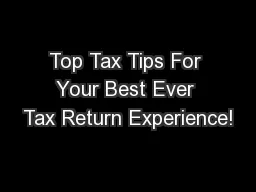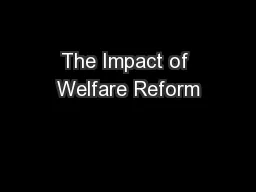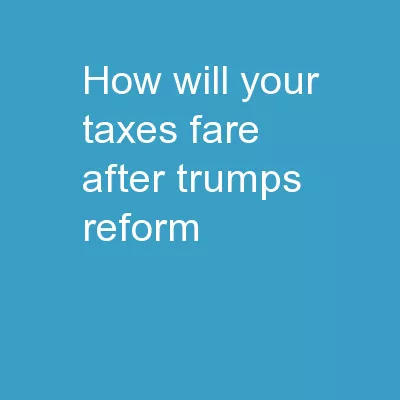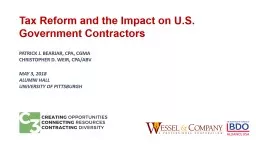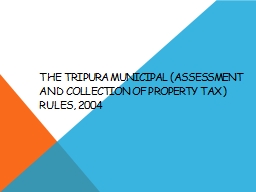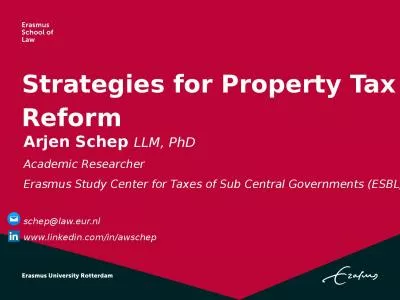PPT-Property Tax Reform
Author : karlyn-bohler | Published Date : 2016-04-12
in Pennsylvania for the South Central Assembly Feb 20 2013 David W Davare PhD Property Tax Current system Revenue and importance Limitations and special issues
Presentation Embed Code
Download Presentation
Download Presentation The PPT/PDF document "Property Tax Reform" is the property of its rightful owner. Permission is granted to download and print the materials on this website for personal, non-commercial use only, and to display it on your personal computer provided you do not modify the materials and that you retain all copyright notices contained in the materials. By downloading content from our website, you accept the terms of this agreement.
Property Tax Reform: Transcript
Download Rules Of Document
"Property Tax Reform"The content belongs to its owner. You may download and print it for personal use, without modification, and keep all copyright notices. By downloading, you agree to these terms.
Related Documents

